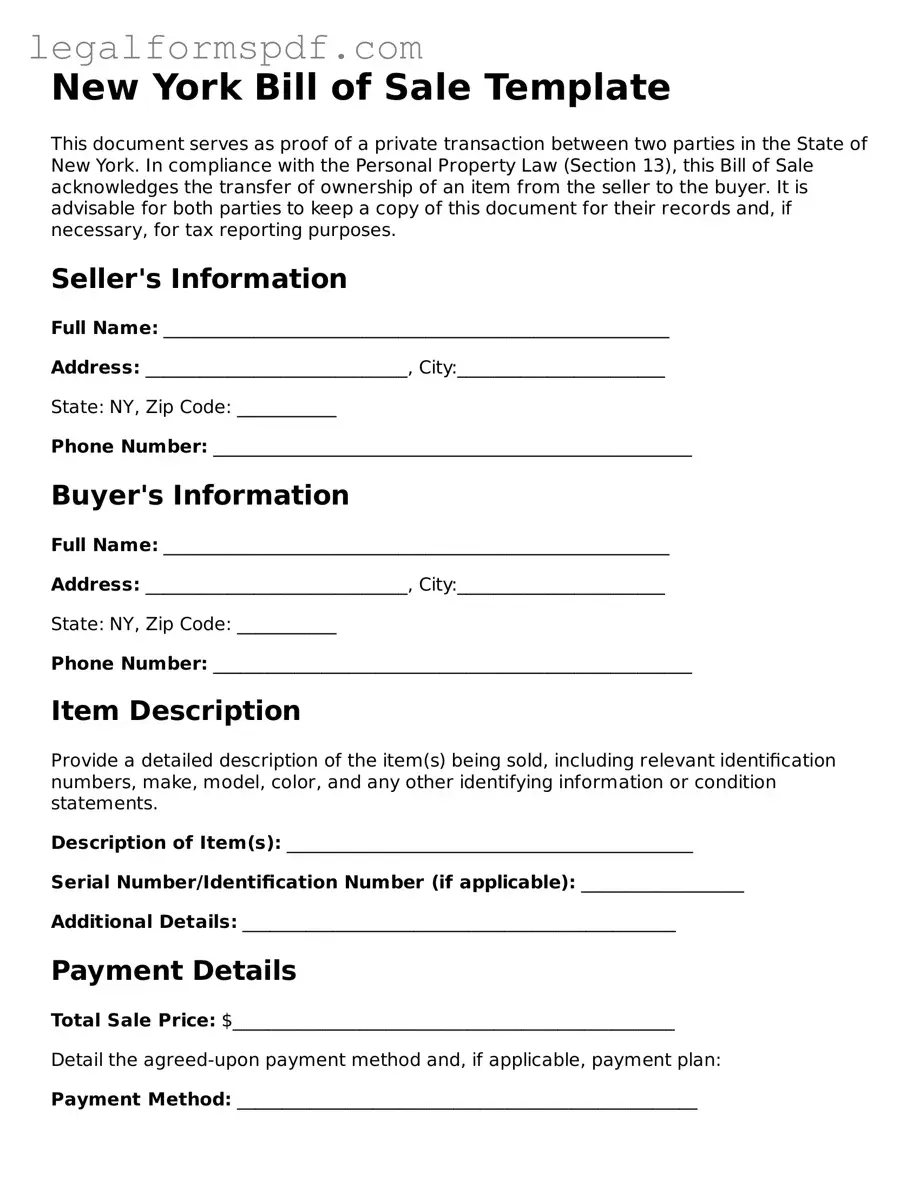New York Bill of Sale Template
This document serves as proof of a private transaction between two parties in the State of New York. In compliance with the Personal Property Law (Section 13), this Bill of Sale acknowledges the transfer of ownership of an item from the seller to the buyer. It is advisable for both parties to keep a copy of this document for their records and, if necessary, for tax reporting purposes.
Seller's Information
Full Name: ________________________________________________________
Address: _____________________________, City:_______________________
State: NY, Zip Code: ___________
Phone Number: _____________________________________________________
Buyer's Information
Full Name: ________________________________________________________
Address: _____________________________, City:_______________________
State: NY, Zip Code: ___________
Phone Number: _____________________________________________________
Item Description
Provide a detailed description of the item(s) being sold, including relevant identification numbers, make, model, color, and any other identifying information or condition statements.
Description of Item(s): _____________________________________________
Serial Number/Identification Number (if applicable): __________________
Additional Details: ________________________________________________
Payment Details
Total Sale Price: $_________________________________________________
Detail the agreed-upon payment method and, if applicable, payment plan:
Payment Method: ___________________________________________________
Payment Plan Details (if any): ______________________________________
Signatures
This document, once signed by both parties, will serve as official notice of the transfer of ownership. It is recommended that both parties also acknowledge and sign in the presence of a Notary Public.
Seller's Signature: ________________________________ Date: ___________
Buyer's Signature: _________________________________ Date: ___________
Notary Acknowledgement (Optional but Recommended)
State of New York)
County of ___________)
This document was acknowledged before me on (date) ___________ by (names of individuals acknowledged).
Notary Public's Signature: __________________________________
Commission Expiration: ______________________________________
